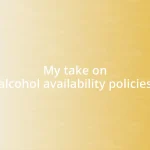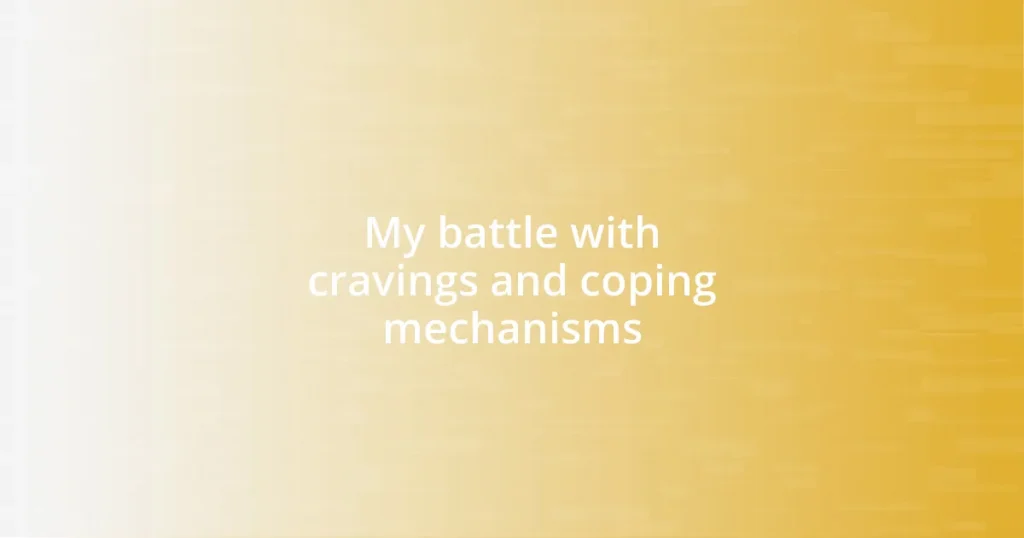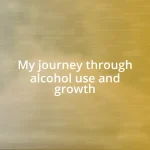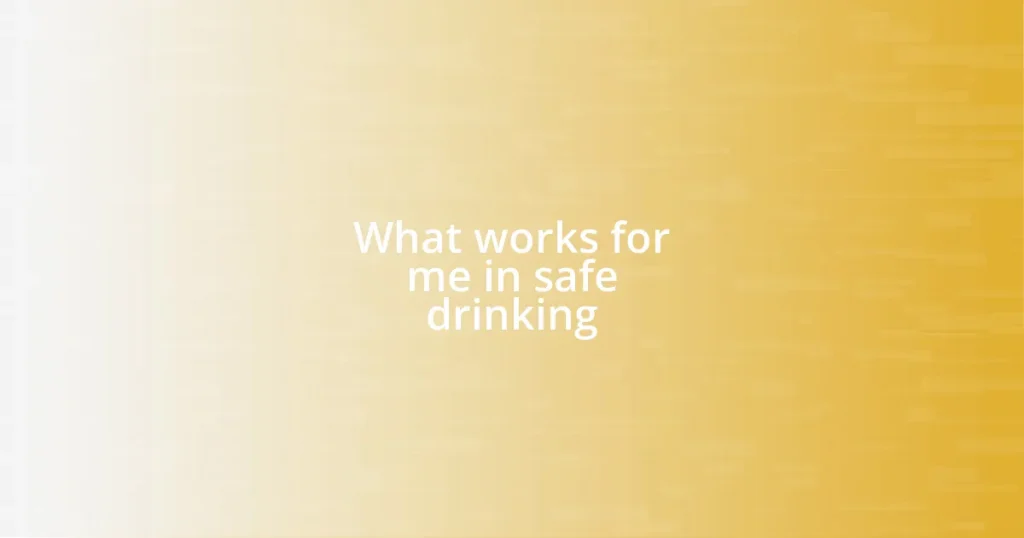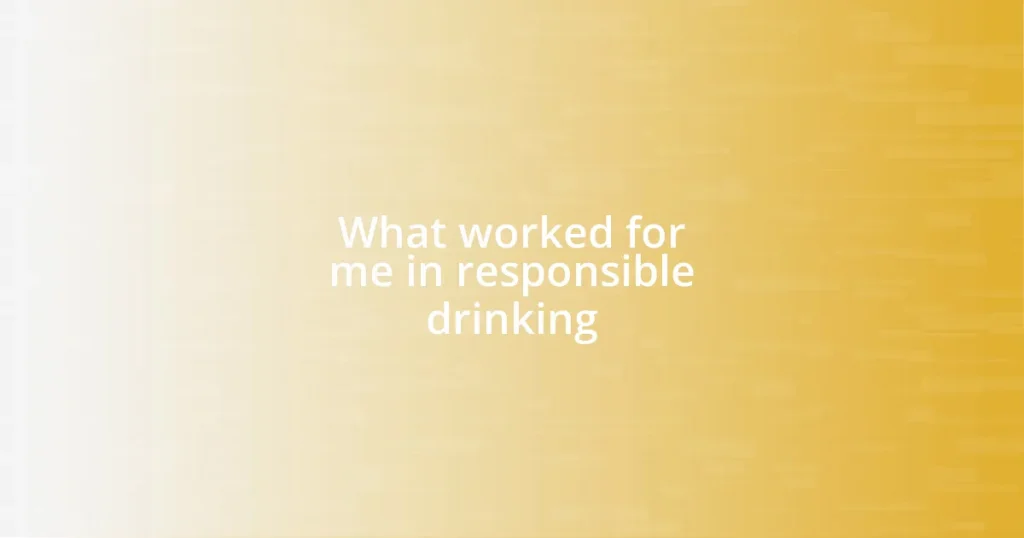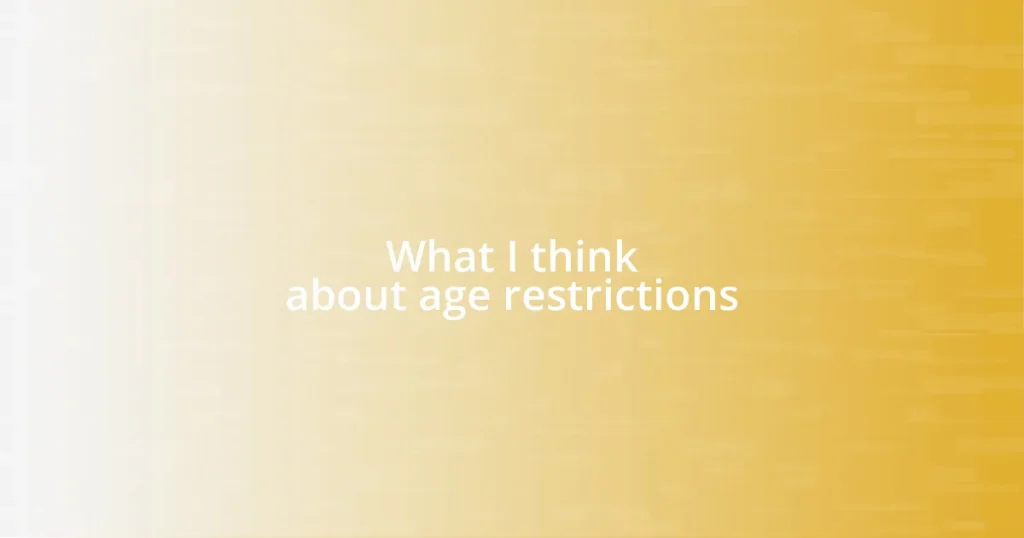Key takeaways:
- Recognizing emotional triggers and patterns in cravings is crucial for developing effective coping strategies.
- Mindfulness techniques, such as mindful breathing and journaling, can help manage cravings by fostering greater self-awareness.
- Tracking cravings and achievements in a journal reinforces progress and encourages self-compassion during setbacks.
- Building resilience through small, incremental changes and establishing a supportive network is essential for long-term habit formation.
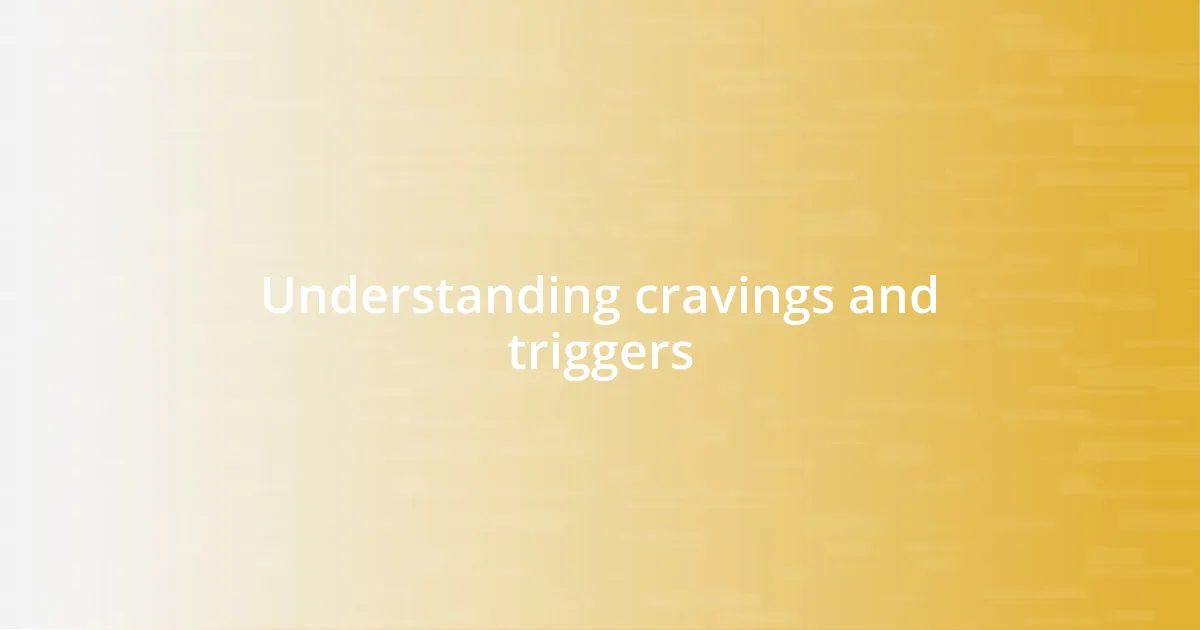
Understanding cravings and triggers
Understanding cravings and triggers can be quite the journey. When I first recognized my triggers, I felt empowered but also a bit overwhelmed. It was eye-opening to realize that stress often led me to crave sugary snacks—comfort food, I suppose. Have you ever noticed how a tough day at work makes the idea of chocolate irresistible?
Sometimes, cravings seem to appear out of nowhere, catching me off guard. I remember walking past a bakery, and the heavenly scent of freshly baked bread seemed to pull me in, almost magnetically. It’s fascinating how our senses can evoke memories and emotions, turning a simple craving into a full-blown battle. Isn’t it interesting how a single smell can trigger a flood of feelings and desires?
As I dived deeper into this exploration, I found that understanding my emotional state was crucial. I often craved certain foods during moments of boredom or loneliness, and recognizing this pattern helped me develop coping strategies. Have you experienced cravings that seem tied to your emotions? For me, journaling became a lifeline; it guided me to confront my feelings rather than simply numb them with food.
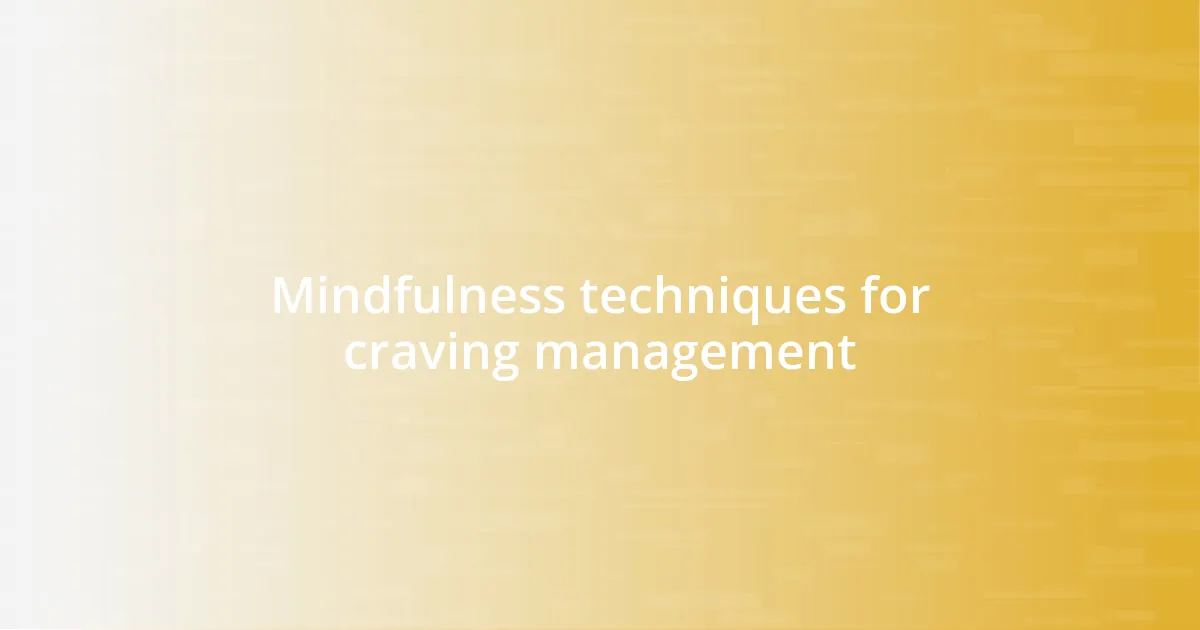
Mindfulness techniques for craving management
Mindfulness techniques have truly transformed my approach to craving management. By incorporating mindfulness into my daily routine, I’ve learned to pause and observe my cravings instead of reacting immediately. I remember a time when a sudden urge for cookies hit me while I was watching TV. Instead of diving into the pantry, I took a breath and simply noticed the sensation; this small shift helped me realize the craving was just that—a temporary feeling that would pass.
Here are some mindfulness techniques I’ve found effective in managing cravings:
- Mindful breathing: Taking deep breaths to ground myself when cravings arise helps create space between the urge and my response.
- Body scan: I gently check in with my body, paying attention to feelings of tension or discomfort, which often accompany cravings.
- Eating meditation: When I do indulge, I focus fully on the flavors and textures, savoring each bite rather than mindlessly munching.
- Journaling about cravings: Writing down my feelings when cravings hit allows me to explore their roots and recognize patterns.
- Visualizing cravings: I picture the craving as a wave, reminding myself that it will rise and fall without consuming me.
These techniques not only help in managing cravings but also encourage a deeper connection with my emotions, making the experience less about food and more about understanding myself.
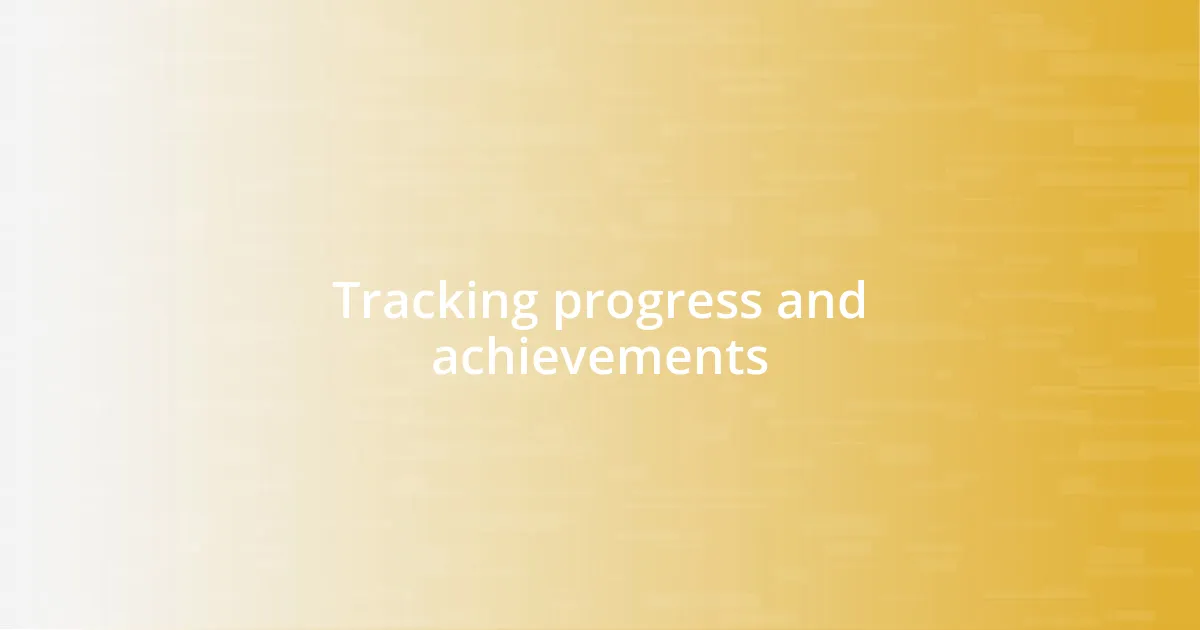
Tracking progress and achievements
Tracking my progress in dealing with cravings has been an eye-opener. I’ve started maintaining a journal where I note down my cravings, their intensity, and the situations surrounding them. This practice has revealed patterns I wasn’t aware of, helping me celebrate small victories. For instance, there was a week when I managed to resist late-night snacking; looking back, I can still feel the rush of pride that came with recognizing my discipline.
Creating a visual representation of my achievements has also made a significant impact. I began using charts to track both my cravings and my coping strategies. Every green tick on my chart is not just a mark; it symbolizes a moment of strength over temptation. Reflecting on these achievements inspires me and reinforces my commitment. I’ve learned that it’s not just about avoidance; it’s about actively engaging with my cravings and developing healthier alternatives.
To further illustrate, I’ve come to appreciate the journey of measurement. Setting up a weekly check-in, I evaluate my emotional responses and food choices. I used to feel defeated when faced with a craving, but now, by analyzing my choices over time, I recognize improvement and growth. This shift in perspective has nurtured a sense of self-compassion and understanding during setbacks, reminding me that progress isn’t always linear.
| Week | Achievements |
|---|---|
| 1 | Resisted 5 cravings and journaled every day |
| 2 | Identified emotional triggers and created a coping plan |
| 3 | Incorporated mindfulness techniques into daily routine |
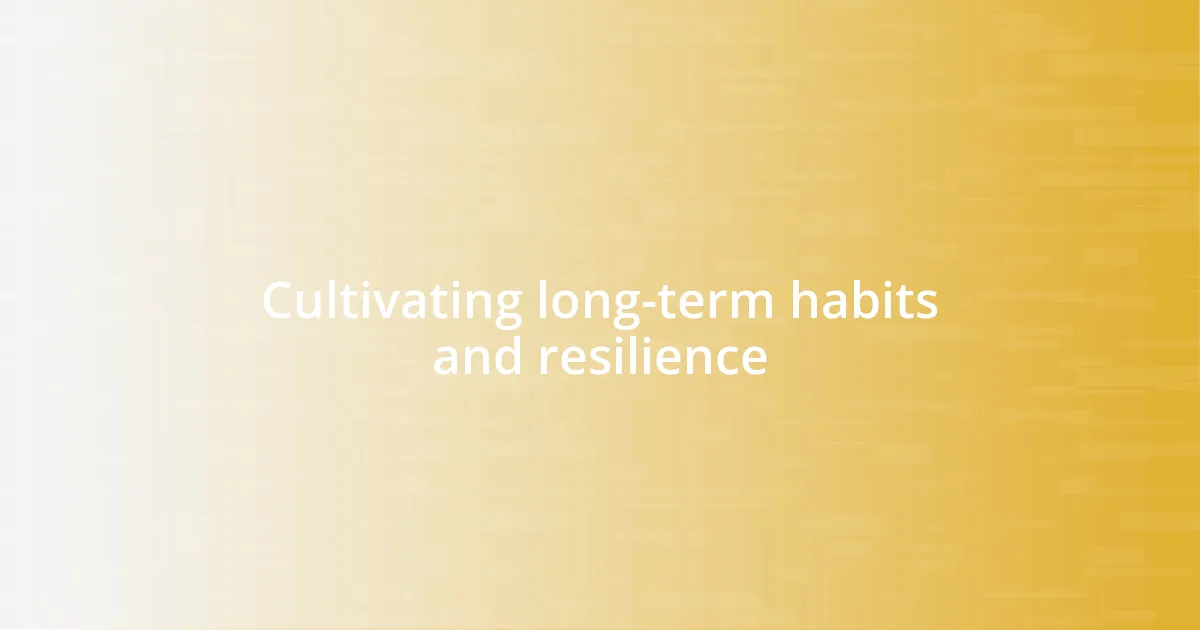
Cultivating long-term habits and resilience
Building long-term habits around managing cravings requires a mindset shift. I’ve found that focusing on small, incremental changes often yields better results than trying to overhaul everything at once. For instance, there was a time when I aimed to cut out all sugary treats completely. But when I allowed myself a small indulgence every now and then, I noticed that my cravings became more manageable and less overwhelming. It made me wonder—could it be that extreme restrictions only fueled my desires further?
Resilience, I’ve discovered, doesn’t come from a rigid plan but rather from being adaptable. There have been moments when I slipped up, giving in to a craving that I had intended to resist. Instead of berating myself, I started to treat these instances as learning opportunities. One evening, after overindulging in snacks during a movie night, I reflected on what triggered that choice. This insight helped me devise a more effective strategy for next time. Isn’t it fascinating how allowing ourselves a mistake can actually lead to stronger habits?
Finally, building a support network has been crucial in this journey. Connecting with friends who share similar goals and challenges has provided me with both encouragement and accountability. We often exchange tips over coffee, and sharing our struggles makes the process feel less isolating. One of my friends has even started a “craving diary,” and it inspires me to maintain my own. How powerful it is to know that I’m not alone in this battle, but rather part of a community striving for healthier habits together!







